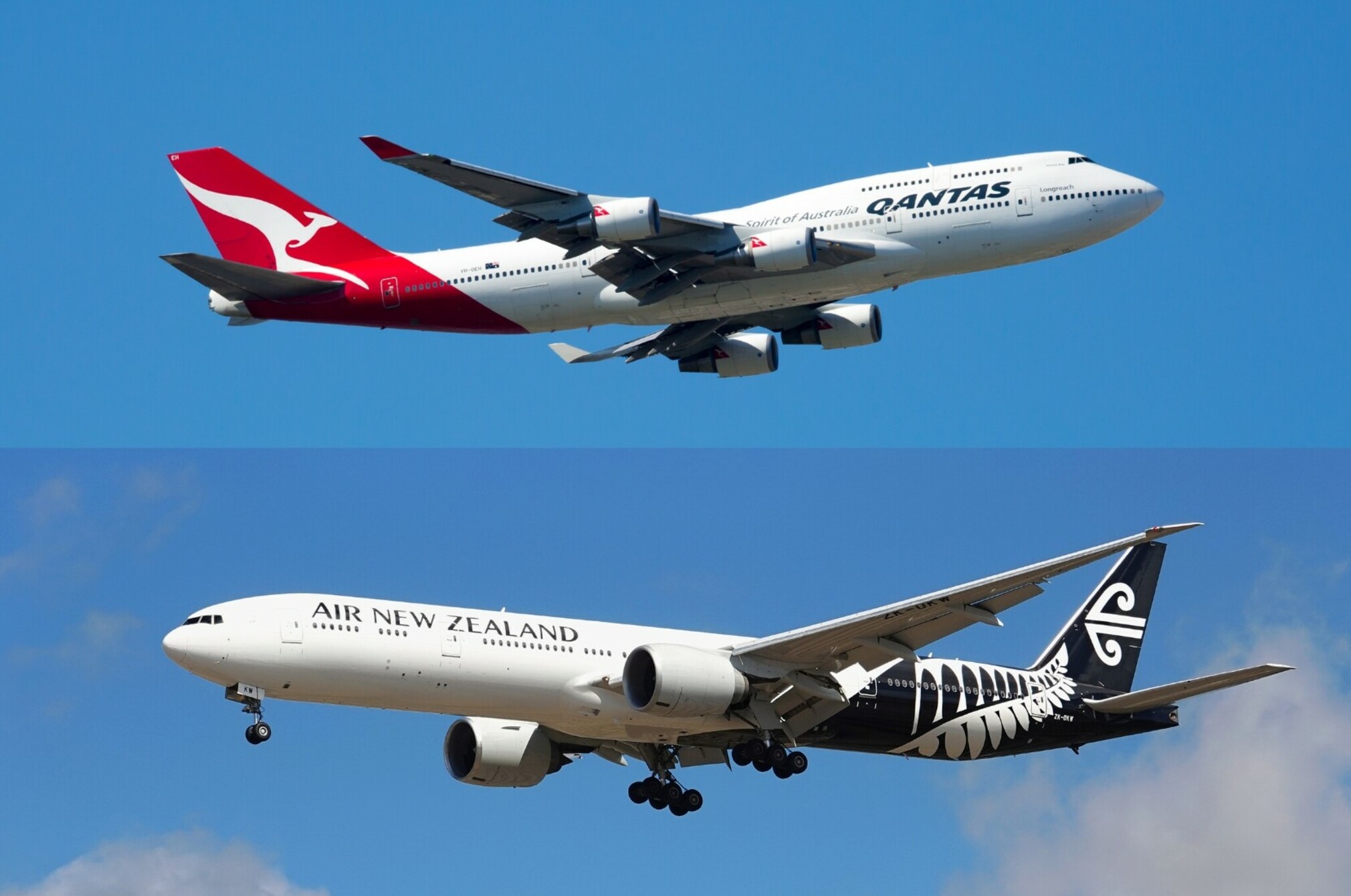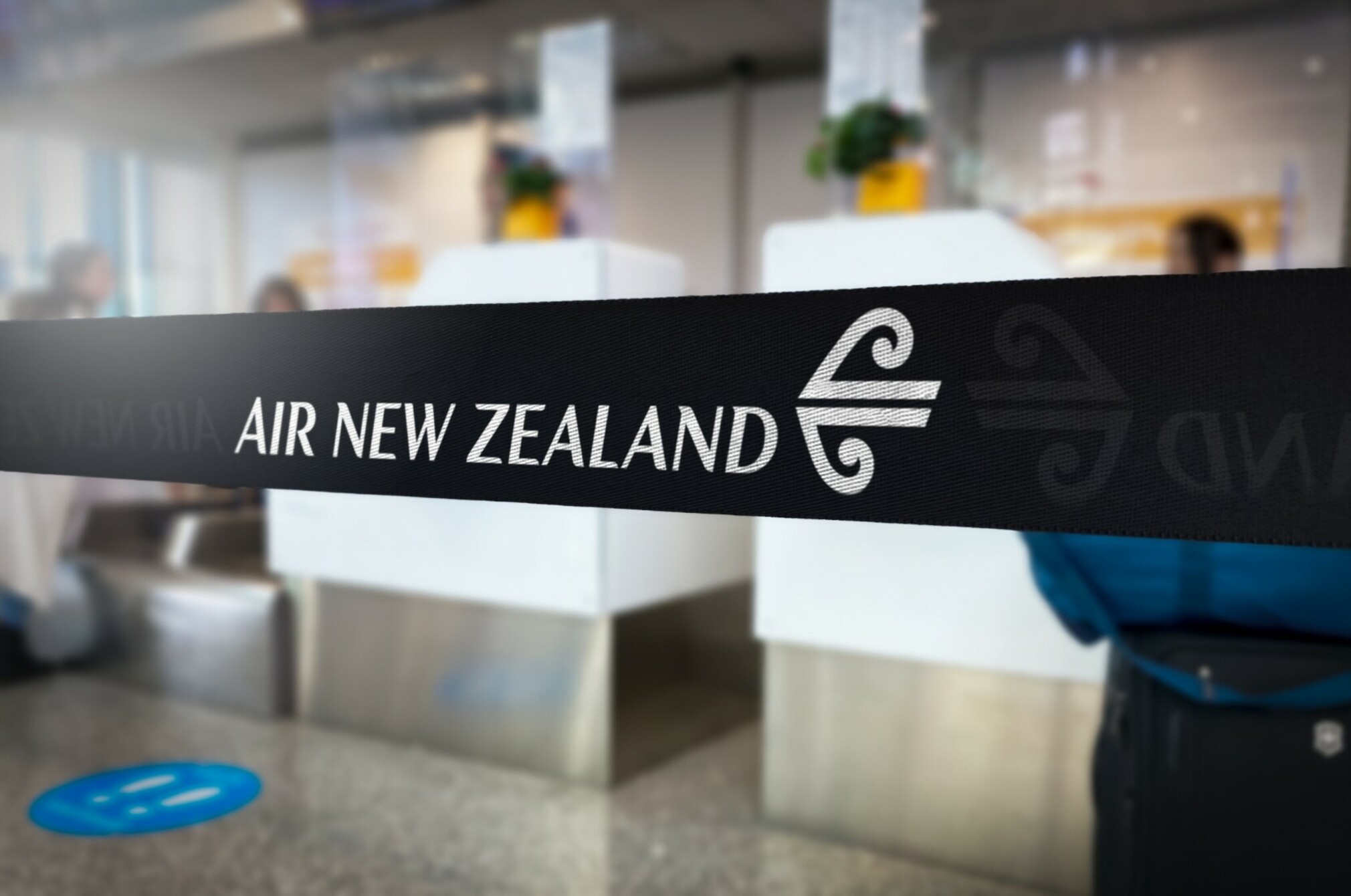Air New Zealand consistently more expensive than trans-Tasman competition

After tracking thousands of flights over 34 weeks, a Consumer investigation has found flying from New Zealand to Australia and back is 16.7% cheaper with Qantas than with Air New Zealand.

- 260,000: The number of seats Qantas will add over 12 months to three routes.
- 7,344: The number of flights we collected data for, over 34 weeks.
- $801.27: The average price of a Qantas return ticket.
- $948.75: The average price of an Air New Zealand return ticket.
- 16.7%: The average percentage that Qantas was cheaper than Air New Zealand by.
- $530: The price of the cheapest return ticket, sold by Air New Zealand for AKL-MEL, booked 16 weeks in advance. (Both legs of the fare were on special.)
- $2,314: The price of the most expensive return ticket, during the October school holidays, sold by Air New Zealand for CHC-BNE, booked 2 weeks in advance.
In March 2024, Australian airline Qantas announced that, from late October 2024, it would be adding flights to a handful of trans-Tasman routes. Qantas said it would add up to 260,000 seats across three routes over 12 months.
The additions are a response to strong demand from customers flying between Australia and New Zealand.
Consumer NZ wanted to see if the additional flights would have any impact on pricing and competition, so we started tracking.
About our investigation
Over 34 weeks, we tracked the prices of 7,344 flights to travel return to Aussie for 10 days with either Air New Zealand or Qantas. Flights departed from Christchurch, Wellington and Auckland enroute to Brisbane and Melbourne. We checked prices for a solo traveler, a couple and a family of two adults and two children.
All prices referred to in this investigation are for return tickets and are expressed in New Zealand dollars.
We focused on six routes. These were the three routes receiving additional Qantas capacity – Christchurch to Melbourne (CHC-MEL), Christchurch to Brisbane (CHC-BNE) and Wellington to Melbourne (WLG-MEL), plus three routes to serve as a control – Wellington to Brisbane (WLG-BNE), Auckland to Melbourne (AKL-MEL) and Auckland to Brisbane (AKL-BNE).
We checked out prices 16 weeks before departure, 6 weeks before departure and 2 weeks before departure to understand the effect of lead-in times. Our travelers had one checked bag each.
We selected the cheapest flights available for the selected travel dates and destinations.
We tracked prices once a week from 24 April 2024 to 11 December 2024 for travel between 8 May 2024 and 2 April 2025.
Here’s what we found.
Qantas is consistently cheaper
On average, Qantas was cheaper than Air New Zealand 94% of the time. It was also, on average, 16.7% cheaper than Air New Zealand across all routes and all lead-in times.
The most expensive ticket we found across all routes and all lead-in times was an Air New Zealand ticket for return flights from Christchurch to Brisbane, booked 2 weeks in advance. The flight departed New Zealand on 2 October, in the middle of the school holidays.
Qantas was only more expensive on average (and only by 1% more) than Air New Zealand for one route and lead-in time: Auckland to Melbourne flights booked 16 weeks in advance.
Not only was Qantas cheaper, but its fares were also more consistently priced than Air New Zealand’s. Air New Zealand’s fares increased more dramatically during periods of high demand, like school holidays, and only dipped below Qantas fares for limited periods of time during sales.
Families should fly with Qantas over the school holidays
In October 2024, we released our inaugural Yeah, Nah Awards, highlighting poor-performing companies. Air New Zealand received the Taken For A Ride award for the hiked-up prices it charged families wanting to travel to Australia during the school holidays.
We looked at 648 flights operated by Qantas and Air New Zealand over 18 weeks to understand how competitive their airfares were during the school holidays. The biggest price increase in Air New Zealand fares between term time and school holidays was 167% in 3 weeks. Over that same time, Qantas fares increased just 7%.
In the worst case, flying with Air New Zealand cost a family of four $4,637 more than it would flying with the Aussie carrier on exactly the same day. In fact, we found Air New Zealand was more expensive than its trans-Tasman competitor Qantas for all of the 24 trips departing during the first week of two sets of school holidays.
Across the entire tracking period, we found families were on average slightly more likely to pay more to fly than single travellers or couples. This is because there are a limited number of seats available at lower prices. If there were only three seats available at a lower price, the family group would have to pay a higher unit price to secure four seats.
Dynamic pricing algorithms
Dynamic pricing, also called surge pricing, is the practice of varying the price of tickets based on demand: customers booking in-demand flights pay more than customers who book earlier. It’s common in the airline industry, but you’ll also see it when buying concert tickets and booking transport on rideshare apps.
So, how does it work?
“As more customers book and the flight fills up, fares will move up through the range, reflecting that there is now greater demand for fewer remaining seats,” an Air New Zealand spokesperson said. “Simply put, it is a supply and demand-driven pricing system, which means lower fares do sell out quickly for peak travel times, locations or around events.”
What isn’t clear about the airlines’ dynamic pricing system is how many tickets each airline holds at each price, how they set the prices and just how much money an airline stands to make.
Both Air New Zealand and Qantas utilise dynamic pricing strategies. Yet our data shows that during periods of high demand, Air New Zealand’s prices tend to increase at a greater rate and to higher prices than Qantas’. In the four-week lead-up to the October school holidays, Air New Zealand’s price for a return CHC-BNE flight booked two weeks in advance increased 150.7%. Meanwhile, Qantas’ price for the same period increased just 1.4%.
An Air New Zealand spokesperson told us, “We are always mindful of competitors’ prices. If Air New Zealand has its settings wrong and is consistently more expensive than the opposition, we lose customers. From April to December 2024, we advertised seven sale periods for Kiwi customers, offering discounted flights between New Zealand and Australia.”
But our data shows Air New Zealand was consistently more expensive than the opposition over the tracking period.
Supply of seats
We’ve estimated Qantas’ trans-Tasman seat capacity to be around 3.9 million for the 2025 year. Air New Zealand’s capacity for the same period, according to figures from New Zealand Airports Association, looks to be around 3.2 million seats.
Before COVID-19, there were over a million extra seats in the market, and Air New Zealand and Qantas had very similar capacities. Supply hasn’t fully recovered since the pandemic, and that has impacted prices – the fewer the seats, the more people are willing to pay.
Air New Zealand has faced supply challenges and is dealing with a constrained fleet. A spokesperson said issues “include increased maintenance demands on our Pratt & Whitney engines (used on our narrowbody jets which fly short haul routes), a global shortage of Rolls-Royce engines (used on our widebody long haul aircraft), and general supply chain and engineering shortages.
In addition, prices increase at periods of higher demand, with the spokesperson explaining that “… the airline cannot maintain additional resource (such as) extra aircraft, staff, equipment, and service) to meet temporary demand spikes. Therefore, pricing increases at times of peak demand, ensuring seats remain available for close-in bookings.”
Competition
Once Qantas had introduced its additional flights from October, we expected to see trans-Tasman flight prices across airlines trend down or at least remain more stable, but the prices trended up instead. This is likely the result of a higher demand for tickets for the Christmas period, making it difficult to draw conclusions about any effect an increase in seat capacity might have had on prices.
An Air New Zealand spokesperson said “Currently, nine carriers operate direct flights between New Zealand and Australia. This is in line with pre-Covid levels and highlights the relatively low barriers to entry, particularly for fifth freedom carriers (carriers operating international routes that neither start nor end in their home country) … At the time of writing, Air New Zealand operates 43% of that capacity.”

Fifth freedom carriers control just 8% of the market, with Qantas and Jetstar operating a 44% market share.
While it’s difficult to say whether Qantas’ extra capacity on selected routes has had an impact on pricing, the data unequivocally supports the conclusion that Air New Zealand needs to improve its competitiveness and adjust its pricing.
In June 2024, Australian and New Zealand regulators approved a code-sharing agreement between Air New Zealand and Virgin Australia. Under the agreement, Virgin Australia will be able to market and sell some of Air New Zealand’s trans-Tasman services. Opponents say this agreement harms the potential for competition on trans-Tasman routes. Along with the results of our research, this leaves us deeply concerned about the future for consumers on trans-Tasman routes.
It’s time for action
We want airlines’ practices to go under the microscope. We’ve been calling on the Commerce Commission to undertake a market study to look at all factors affecting competition in the aviation sector, including dynamic pricing and market share. The study could shed light on the way the trans-Tasman market operates.
Commission chair Dr John Small has indicated the commission won’t self-initiate a study, but we’ll continue to advocate for a solution in this space. Consumers deserve access to fair and affordable flights.
Read more about our call for a market study.

Flight rights campaign
We’re calling for airlines to communicate honestly with passengers about the reason for cancellations and delays, and clearly display their rights.
Member comments
Get access to comment